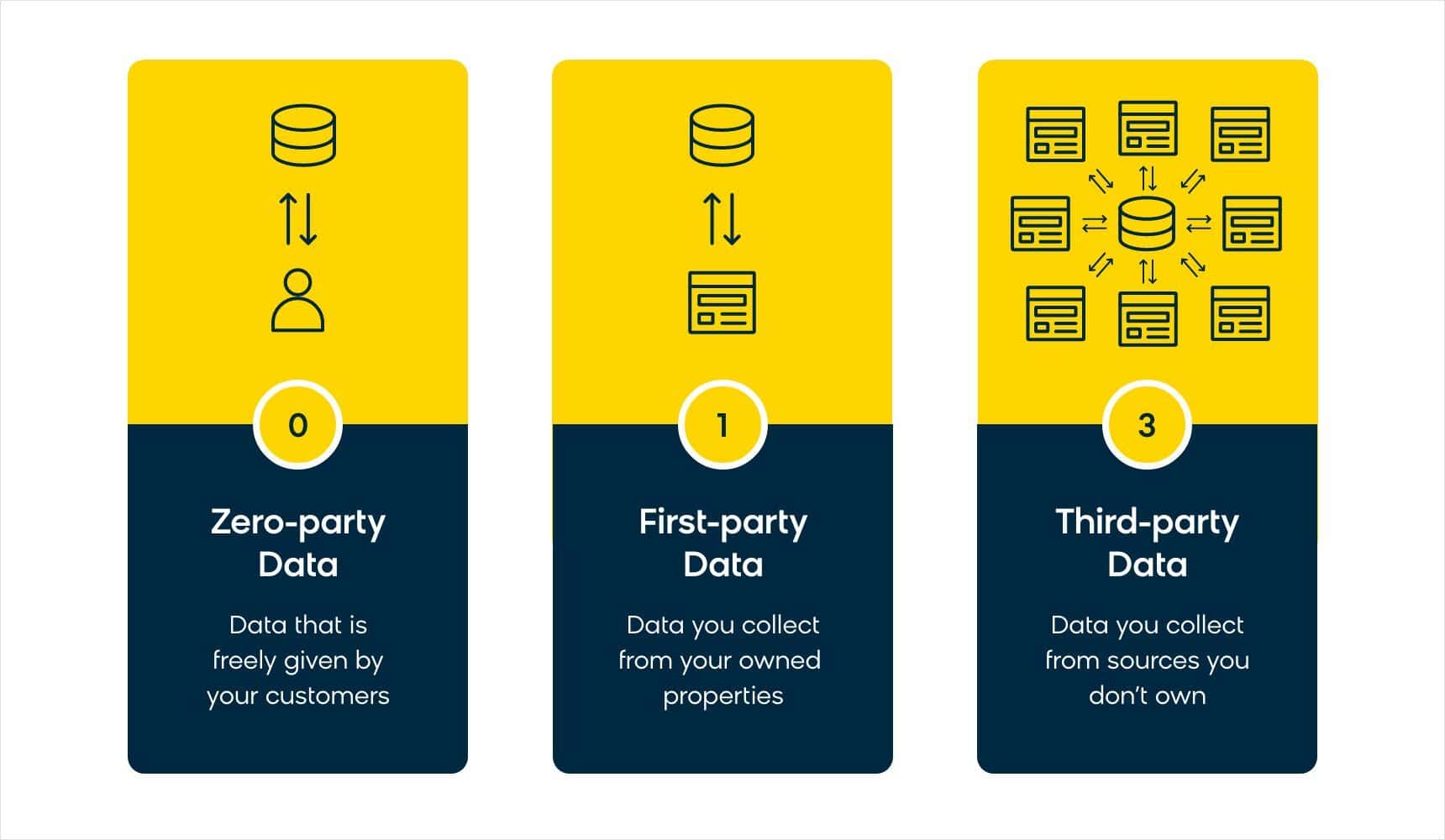Artificial intelligence is such a hot topic right now that it seems like every department of every business is adopting it as fast as they can. It’s the tool of the future, and the fear of missing out is driving professionals (especially marketers) to embrace AI first and ask questions later.
But despite the pressure to adopt AI and be ahead of the curve, marketers need to incorporate this new technology into their business with a people-first approach.
There’s no doubt that artificial intelligence is an incredible tool, and one that every marketer should learn to use effectively. But AI for AI’s sake is how marketers end up with irrelevant efforts and campaigns that lack a personal touch.
At the end of the day, you need AI to solve the same problem that every marketer has always faced: How do you convince people to trust, connect with, and buy from your business?
To do this, you need to go back to the basics and craft a human-focused AI strategy.
You Can’t Take People Out of the Commerce Equation
Retail, ecommerce, DTC, B2C, B2B — before we had fancy names for categorizing the ways people buy and sell things, we simply had commerce.
At its core, commerce is defined by two things:
- The activity of buying and selling, especially on a large scale
- The social dealings between people
This second point is crucial to remember, but it’s the aspect of commerce that businesses are most likely to forget. If commerce is inherently driven by transactions between people, why have we sought to remove “people” from the equation? This is evident in the language we use:
Shopper. Buyer. Consumer. Subscriber. Customer. Follower. User. Lead.
We’ve stopped focusing on the core component of the commerce equation: people!
And it’s not just the lexicon that has changed. The tools businesses use tend to focus almost exclusively on their bottom line instead of the social, one-to-one needs of commerce.
This is evident in the way AI has been implemented in the recent past — have you ever had a frustrating experience with a live chat “agent” or chatbot when all you wanted to do was connect with a real person? That is AI at its worst, when humans have been entirely removed from the experience.
Thankfully, advancements in generative AI and large language models have come a long way, and they’re starting to accurately replicate human interactions. The key is the data that these systems are using to learn and personalize the relationships they have with people.
These revolutionary tools can take data you’ve collected from your customers, understand their preferences and needs, and actually build interactive and dynamic experiences with your audience — something that ecommerce has been sorely lacking, and that has the potential to completely transform commerce as we know it.
The Right Relationship With AI Starts With the Right Data
While connected data is the essential fuel for game-changing AI, this isn’t a given for many modern businesses. Integrated data sources and smart collection practices are the first steps to achieving the personalized experiences that AI can offer.
But the push for consumer privacy has made this task much more difficult for marketers. With cookies and third-party tracking no longer an option, what’s a brand left to do if they want to truly connect with their customers in a meaningful way?
The answer is simple: collect the data that customers want to give you (i.e., zero- and first-party data).
Let’s briefly recap the difference between the data types:
- Zero-Party Data: Data that is freely given by your customers (survey responses, sign-up forms, etc.)
- First-Party Data: Data you collect from your owned properties (website browsing, buying behavior, etc.)
- Third-Party Data: Data you collect from sources you don’t own (third-party tracking, list buying or scraping, etc.)
Not only is zero- and first-party data of significantly higher quality, it’s the data that your customers deem share-worthy and relevant to their experience with your brand.
Remember, commerce is a relationship between people — when you listen to your customers, you have all the information you need to build the experience they want. By giving you specific data points, they’re trusting your brand to use them, craft a more personal journey, and make their lives better.
Personalization Is What Next-Gen AI Strives For
Although there are strong protections in place for the types of data that can be collected and how it can be tracked or used, there are also high expectations set by your customers. They expect to get truly personalized experiences with your brand in exchange for the data they provide.
And this expectation is a fair one. Say you’ve spent a significant amount of money with a particular brand, only to end up receiving emails or texts that are not relevant to the types of products you’ve purchased or expressed interest in. This is a frustrating experience as a consumer, and a waste of money that the brand could have better invested in getting you to make a future purchase.
Thankfully, this is where AI can help. It can weave all your marketing channels together, letting your customers interact with your brand at any touchpoint, picking up their customer journey wherever they left off.
It can offer the conversational relationship that your customers crave, making them feel like you’re listening to their needs and utilizing the data they provide to better their shopping experience.
In short, it can bridge the gap between the experience customers expect and the one marketers struggle to provide. That’s the true connection that marketers need to make, and AI can help you achieve it.
How AI Can Offer That In-Store Experience Everywhere
But what exactly does that bridge between expectations and marketing goals look like? How does AI fit into the current martech landscape?
Imagine this scenario: You’re a modern marketer who uses an intelligent marketing automation platform that’s integrated with all of your website and customer data to continuously learn about the types of products your customers are buying, engaging with, and looking for. This gives you access to all the data and touchpoints you need to make an impact.
You’re doing all the right things — you have the power to reach your audience on a variety of channels with a degree of segmentation, but you want to take it a step further. You want a personalized experience for every customer, like what they would get if they walked into your storefront and had a sales associate help them find exactly what they were looking for.
Layering AI on top of your customer data is the best way to replicate that in-store experience — online. It can make tailored recommendations based on what they’ve bought in the past. It can refine their shopping experience in real time as they navigate your website. It can even optimize the smallest details of a customer’s journey, from the CTA you show them to the send time for your email campaigns, all based on the preferences and past behaviors of each unique person you market to.
Think of the best in-store experience you’ve had, where you were greeted by a helpful (but not annoying!) store associate who was genuinely interested in helping you find exactly what you were shopping for. Odds are they helped assess your likes and dislikes, asked about other items you’ve purchased, and were able to make tailor-made recommendations just for you based on your preferences and conversational inputs.
This is the level of personalization that just isn’t possible with automation alone. Marketers finally have the ability to translate that IRL experience into the ecommerce realm, and AI is the key to making it happen.
Conversational AI Is the Future of Customer-Focused Commerce
That personal, in-store interaction has always been a goal just out of reach for ecommerce. But AI is quickly making it a reality, and soon the two experiences will feel indistinguishable.
Conversational commerce is the next frontier of artificial intelligence that goes beyond optimizing the back-end workings of campaigns. This reimagining of ecommerce brings AI to the forefront, creating a two-way, conversational experience designed to make customers feel truly seen and heard by the brands they’re connecting with.
Bloomreach is at the forefront of this exciting new era of ecommerce with Bloomreach Clarity, our revolutionary conversational AI. With Clarity, customers can interface with AI in real time and get quick answers to important questions, easily purchase items without having to navigate through entire websites, and receive personalized recommendations based on their previously collected customer data. This goes far beyond the cookie-cutter auto-replies from chatbots of yesteryear and is set to quickly become the driving force for online commerce experiences.
And while this breaks new ground, the goal of this exciting technology is a familiar one for commerce: building human connections. No matter how far or fast artificial intelligence progresses, the human element will always be a core component that no marketer can afford to neglect.
People are the driving force behind conversational commerce. If you remove people from the equation, then commerce ceases to function. Always keep that in perspective to set yourself up for success with AI.
Wondering what the future of ecommerce looks like? Visit our site to learn more about Clarity, our shopping AI that’s reshaping the digital landscape.















